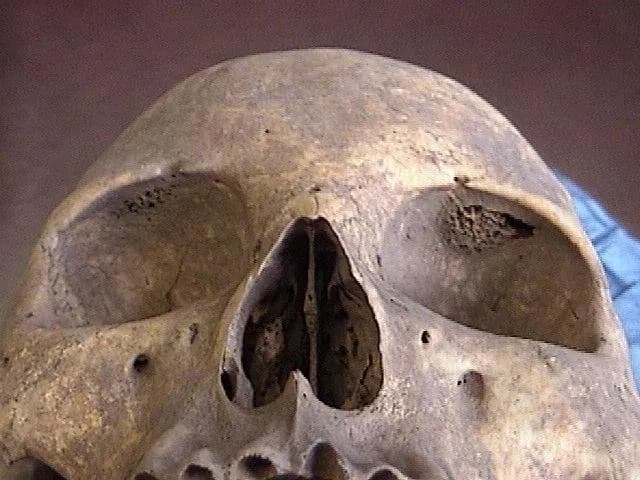
Skull Condition Thought Extinct Is Actually Widespread, Research Finds
Some forensic anthropologists thought the skull condition called cribra orbitalia (CO) was a thing of the past -- but new research from North Carolina State University and the University of the Witwatersrand finds that it not only still exists, but is fairly common in both North America and South Africa.
CO is a condition in which the bone inside the eye sockets becomes porous. It is not known to cause any adverse health effects, but is generally regarded as being caused by iron deficiency anemia.
The condition has traditionally been used by anthropologists to assess diet and health in prehistoric populations. For example, the presence of CO could tell researchers that a population was not getting a sufficiently varied diet.
"But there's been a lot of debate about the prevalence of CO in modern populations, with some saying it had effectively disappeared," says Ann Ross, director of the Forensic Sciences Institute at NC State and co-author of a paper on the work. "We wanted to know if CO was still extant and, if so, how common it is in modern populations, relative to earlier eras."
For this study, the researchers looked at modern, historic and prehistoric human remains from South Africa, North Carolina and the Western Hemisphere Database. Altogether, the researchers evaluated data on 844 skulls: 245 prehistoric, 381 historic (as recent as the early 20th century) and 218 modern.
Their findings were surprising.
The researchers found that CO was not only present in modern populations, but that it was not even uncommon.
For example, the researchers found that two of the five modern North American juvenile skulls evaluated in the study -- 40 percent -- had CO. And 15 of the 60 South African juveniles evaluated in the study -- 25 percent -- had CO.
"We thought we might see some CO, but not to the extent that we did," Ross says. "The high rates may stem from the fact that these remains were part of forensic cases -- there were often related to cases of homicide or neglect. These cases are not representative of health for all children."
Overall, the researchers found that 12.35 percent of modern North Americans and 16.8 percent of modern South Africans, across all age groups, had CO.
Both rates are higher than their historic counterparts. Only 2.23 percent of historic South African skulls evaluated had CO, and only 6.25 percent of historic North American skulls. Even the prehistoric North American skulls had a lower rate of CO, at 11.86 percent.
"We think the increased prevalence of CO in the modern skulls may be due to intestinal parasites in some populations and iron-poor diet," Ross says.
"These findings drive home the fact that disadvantaged socioeconomic groups, and parts of the developing world, are still struggling with access to adequate nutrition," Ross adds. "Corn may give people a full belly, but it's not going to give people all of the nutrients they need to be healthy."
The paper, "Cribra Orbitalia: Prevalence in Contemporary Populations," is published online in the journal Clinical Anatomy. Lead author of the paper is Maryna Steyn of the University of the Witwatersrand. The paper was co-authored by Deona Botha of Witwatersrand and Sarah Voeller, a former graduate student at NC State.
The above post is reprinted from materials provided by North Carolina State University. Note: Materials may be edited for content and length.
Disclaimer: DoveMed is not responsible for the adapted accuracy of news releases posted to DoveMed by contributing universities and institutions.
Primary Resource:
Steyn, M., Voeller, S., Botha, D., & Ross, A. H. (2016). Cribra orbitalia: Prevalence in contemporary populations. Clinical Anatomy.
Related Articles
Test Your Knowledge
Asked by users
Related Centers
Related Specialties
Related Physicians
Related Procedures
Related Resources
Join DoveHubs
and connect with fellow professionals

0 Comments
Please log in to post a comment.